- May 28, 2013
- 125
- 25
Click For Full Article
We can learn alot from nature. For instance, think of how far a flock of geese gets when they work together...
This post is based on a reprint from a hand-out* given to Becky by her first Coach, Carol Wade-Lam, during her first season as an All Star 16 years ago.
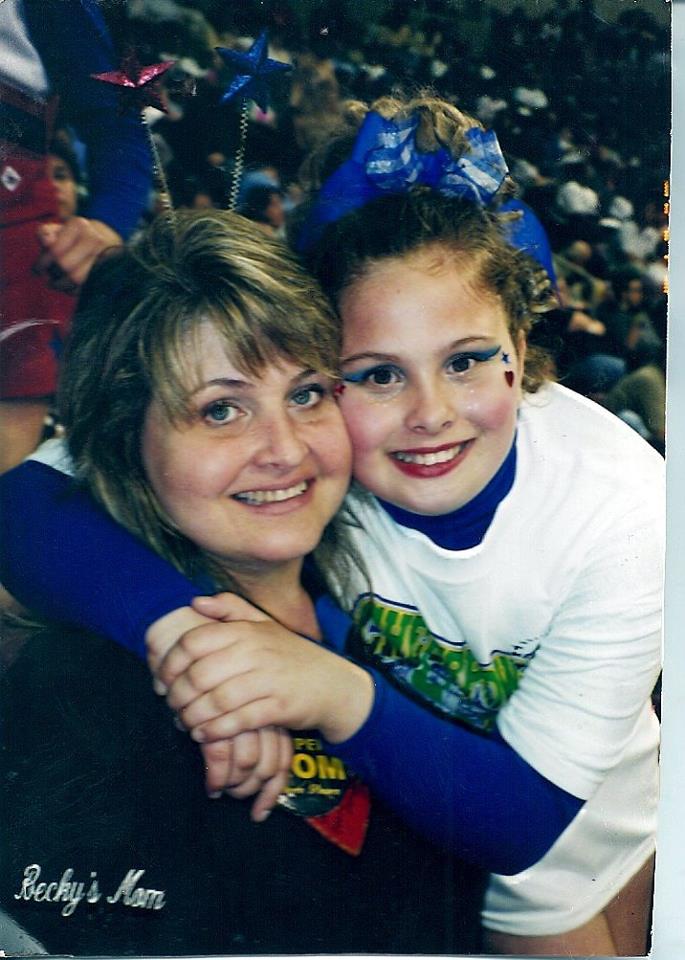
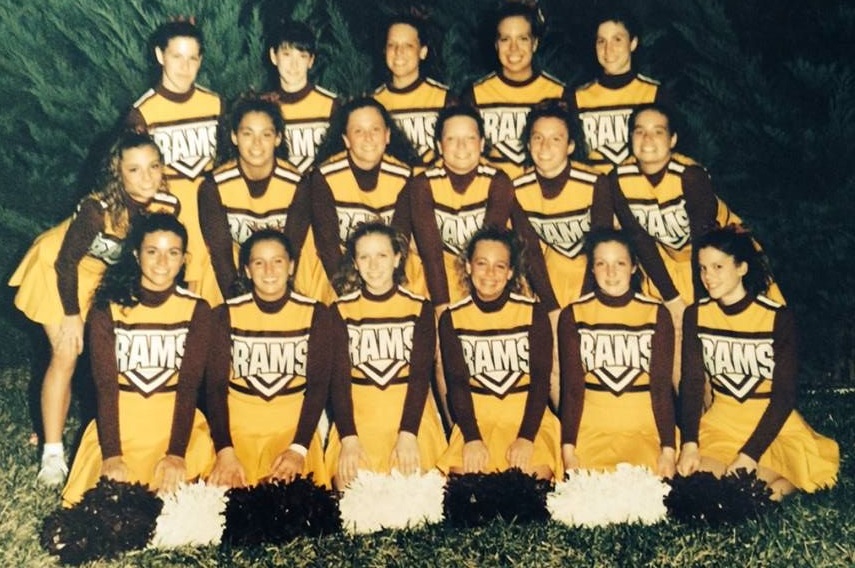
Photo 1: Becky and I during one of our first travel comps to Hershey Park, 1999;
Photo 2: Team photo of UCA National High School Cheerleading Champions Shepherd High High School 1995, Coach Carol Wade-Lam
Carol has been a cheer industry leader for more than 30 years. Her achievements include: former coach of national high school cheerleading champions; national high school cheer judge; Owner of 5 Star Academy which was one of the first All Star gyms in Massachusetts (Carol's close friend Cheryl Pasinato was the first when she opened East Elite -now East Celebrity Elite); Founder and president of the Massachusetts All Star Association (MASA) which promotes state-wide support within the All Star community and produces the Annual MASA All-Star State Championship and the MASA Northeast All-Star Championship which distributes more than $5,000 in scholarships annually.
Lessons of the Geese
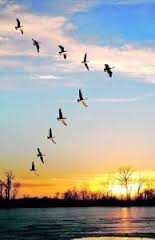
This time of year, in the fall, you see geese heading south for the winter, flying along in the "V" formation...here's what science has discovered about why they fly that way.
It has been learned that as each bird flaps its wings, it creates uplift for the bird immediately following.
By flying in a "V" fomation the whole flock adds at least 71% greater flying range than if each bird flew on its own. This is quite similar to people (who are part of a team and share a common direction) who get where they are going quicker and easier because they are traveling on the trust of one another and lift each other up along the way.
Whenever a geese falls out of a formation, it suddenly feels the drag and resistance of trying to go through it alone and quicky gets back into formaiton to take advantage of the power of the flock.
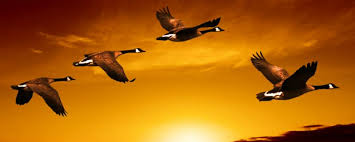
When the lead goose gets tired he rotates back in the wings and another goose takes over. It pays to share leadership and take turns doing hard jobs.
The geese honk from behind to encourage those up front to keep their speed. Words of support and inspiration help energize those on the front line, helping them to keep pace in spite of the day-to-day pressures and fatigue.
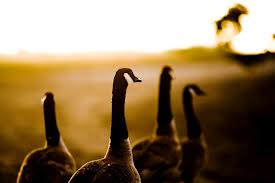
Finally when a goose gets sick or is wounded and falls out, two geese fall out of the formation and follow the injured one down to help and protect him. They stay with him until he is either able to fly or until he is dead, then thay launch out with another formation to catch up with their group.
What can we learn from geese?
When one of us is down, it's up to the others to stand by us in our time of trouble. If we have the sense of a goose, we will stand by each other when things get rough. We will stay in formation with those headed where we want to go. It is important that our honking be encouraging.
Otherwise it's just well, honking.
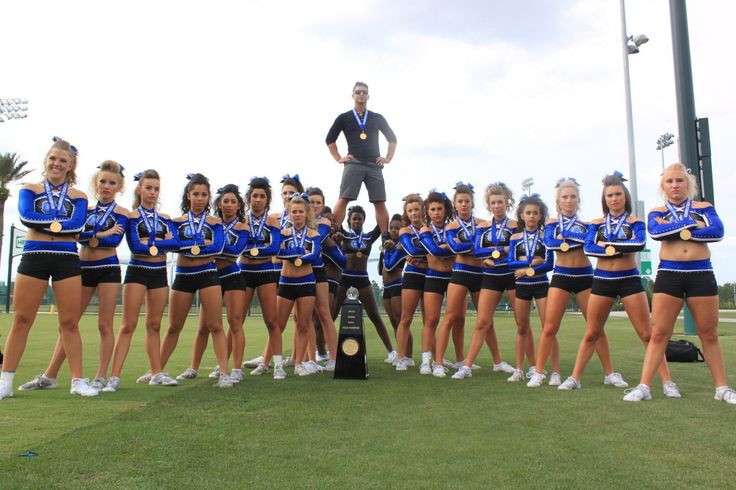
2013 CALI Lady Bullets knew the power of the "V"
If we have as much sense as a goose, we will stay in formation and share information with those who are headed in the same direction that we are going.The next time you see a formation of geese remember their message that:
"It is indeed a reward, a challenge and privliege to be a contributing member of a team team."
*Lessons of the Geese authorship has been credited to a transcription of a speech given by Angeles Arrien at the 1991 Organizational Development Network, based on the work of Milton Olson, however an earlier version was written in 1972 by Dr Robert McNeish of Baltimore, MD.
Dr McNeish, began his career as a science teacher before he became involved in school administration. He had been intrigued with observing geese for years and first wrote the piece for a sermon he delivered in his church. Often used in corporate management seminars now, "LESSONS FROM THE GEESE" began with an educator who has given his life to help open new worlds and horizons to our youth.
We can learn alot from nature. For instance, think of how far a flock of geese gets when they work together...
This post is based on a reprint from a hand-out* given to Becky by her first Coach, Carol Wade-Lam, during her first season as an All Star 16 years ago.


Photo 1: Becky and I during one of our first travel comps to Hershey Park, 1999;
Photo 2: Team photo of UCA National High School Cheerleading Champions Shepherd High High School 1995, Coach Carol Wade-Lam
Carol has been a cheer industry leader for more than 30 years. Her achievements include: former coach of national high school cheerleading champions; national high school cheer judge; Owner of 5 Star Academy which was one of the first All Star gyms in Massachusetts (Carol's close friend Cheryl Pasinato was the first when she opened East Elite -now East Celebrity Elite); Founder and president of the Massachusetts All Star Association (MASA) which promotes state-wide support within the All Star community and produces the Annual MASA All-Star State Championship and the MASA Northeast All-Star Championship which distributes more than $5,000 in scholarships annually.
Lessons of the Geese

This time of year, in the fall, you see geese heading south for the winter, flying along in the "V" formation...here's what science has discovered about why they fly that way.
It has been learned that as each bird flaps its wings, it creates uplift for the bird immediately following.
By flying in a "V" fomation the whole flock adds at least 71% greater flying range than if each bird flew on its own. This is quite similar to people (who are part of a team and share a common direction) who get where they are going quicker and easier because they are traveling on the trust of one another and lift each other up along the way.
Whenever a geese falls out of a formation, it suddenly feels the drag and resistance of trying to go through it alone and quicky gets back into formaiton to take advantage of the power of the flock.

When the lead goose gets tired he rotates back in the wings and another goose takes over. It pays to share leadership and take turns doing hard jobs.
The geese honk from behind to encourage those up front to keep their speed. Words of support and inspiration help energize those on the front line, helping them to keep pace in spite of the day-to-day pressures and fatigue.

Finally when a goose gets sick or is wounded and falls out, two geese fall out of the formation and follow the injured one down to help and protect him. They stay with him until he is either able to fly or until he is dead, then thay launch out with another formation to catch up with their group.
What can we learn from geese?
When one of us is down, it's up to the others to stand by us in our time of trouble. If we have the sense of a goose, we will stand by each other when things get rough. We will stay in formation with those headed where we want to go. It is important that our honking be encouraging.
Otherwise it's just well, honking.

2013 CALI Lady Bullets knew the power of the "V"
If we have as much sense as a goose, we will stay in formation and share information with those who are headed in the same direction that we are going.The next time you see a formation of geese remember their message that:
"It is indeed a reward, a challenge and privliege to be a contributing member of a team team."
*Lessons of the Geese authorship has been credited to a transcription of a speech given by Angeles Arrien at the 1991 Organizational Development Network, based on the work of Milton Olson, however an earlier version was written in 1972 by Dr Robert McNeish of Baltimore, MD.
Dr McNeish, began his career as a science teacher before he became involved in school administration. He had been intrigued with observing geese for years and first wrote the piece for a sermon he delivered in his church. Often used in corporate management seminars now, "LESSONS FROM THE GEESE" began with an educator who has given his life to help open new worlds and horizons to our youth.
